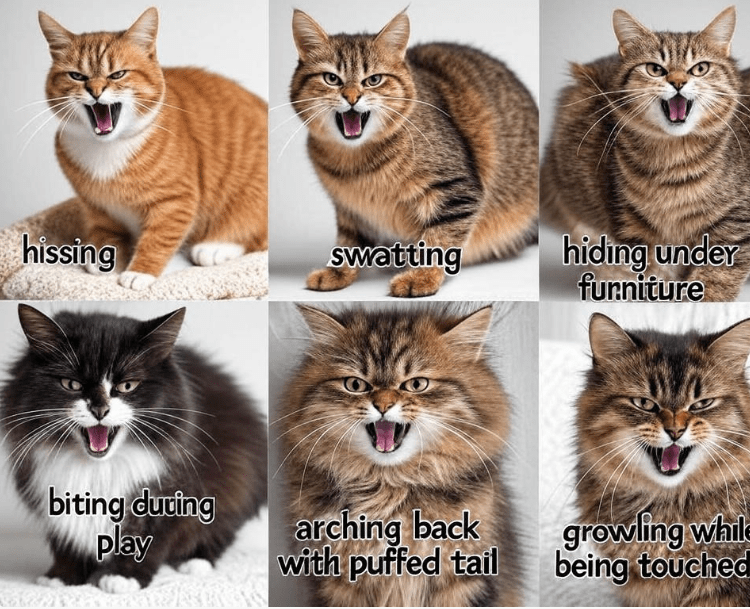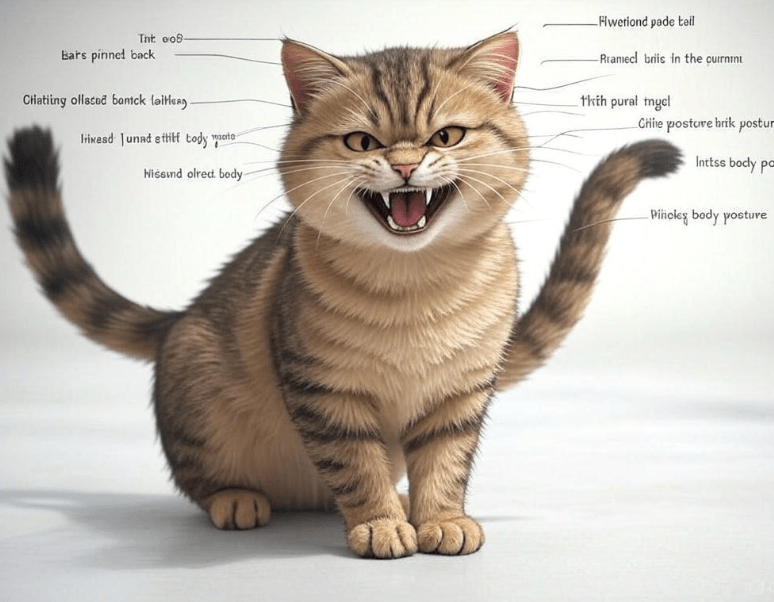
There’s nothing more unsettling than a sweet, purring cat suddenly hissing, swatting, or biting out of nowhere. Cat aggression towards people can be alarming, leaving pet owners confused, frustrated, and even scared. Whether your cat has always had a feisty streak or has recently started lashing out, understanding the root cause is the first step toward restoring peace.
Aggression in cats isn’t just about bad behavior—it’s often a cry for help. From fear and pain to territorial instincts, multiple factors can trigger aggressive reactions. The good news? With patience, the right techniques, and expert guidance, you can help your feline companion feel safe and secure again.
In this guide, we’ll explore:
The different types of cat aggression and what causes them
How to recognize warning signs before an attack
Proven strategies to calm an aggressive cat
When to seek professional help from a vet or behaviorist
Real-life success stories of cats who transformed with the right approach
By the end, you’ll have a clear action plan to turn your home back into a peaceful sanctuary for both you and your cat.
Understanding Cat Aggression Towards People: Types and Triggers

Not all aggression is the same. Cats display hostile behavior for various reasons, and identifying the type is crucial for finding the right solution. Here are the most common forms:
Fear-Based Aggression
A scared cat may lash out defensively. Sudden movements, loud noises, or unfamiliar people can trigger this reaction. Signs include flattened ears, dilated pupils, and a puffed-up tail.
Play Aggression
Kittens and young cats often bite or pounce during play, not realizing their claws and teeth hurt. Without proper training, this can escalate into a serious issue.
Redirected Aggression
If a cat gets agitated by something it can’t reach (like another cat outside the window), it may redirect its frustration onto the nearest person or pet.
Petting-Induced Aggression
Some cats enjoy being stroked—but only for a short time. Overstimulation can lead to sudden bites or scratches without warning.
Pain-Related Aggression
A cat in pain (from arthritis, dental issues, or injuries) may become irritable and lash out when touched. A vet check-up is essential to rule out medical causes.
Territorial Aggression
Cats are naturally territorial. A new pet, baby, or even rearranged furniture can make them feel threatened, leading to defensive attacks.
How to Recognize Warning Signs Before an Attack

Cats rarely attack without warning. Learning their body language can prevent many aggressive incidents:
Ears pinned back – A sign of fear or irritation
Tail flicking or lashing – Indicates growing frustration
Dilated pupils – Often seen in fearful or overstimulated cats
Hissing or growling – A clear “back off” signal
Stiff body posture – Means the cat is ready to strike
Ignoring these cues can lead to a bite or scratch. Always give your cat space when you notice these signs.
Expert Strategies to Reduce Cat Aggression Towards People
Create a Safe, Low-Stress Environment

1.Provide hiding spots (cat trees, boxes, or quiet rooms).
2.Use Feliway diffusers to release calming pheromones.
3.Maintain a consistent routine—cats thrive on predictability.
Use Positive Reinforcement
Reward calm behavior with treats and gentle praise. Never punish aggression, as it can worsen fear and anxiety.
Gradual Desensitization for Fearful Cats
If your cat fears certain people or sounds, expose them slowly from a distance while offering treats. Over time, they’ll associate the trigger with positive experiences.
Interactive Play Therapy
Engage your cat in daily play sessions with wand toys to release pent-up energy. This reduces play aggression and strengthens your bond.
Respect Their Boundaries
Learn your cat’s petting limits. Some tolerate only a few strokes before becoming overstimulated. Watch for tail twitches or ear movements signaling discomfort.
Consult a Veterinarian
If aggression is sudden or severe, a medical issue could be the cause. Pain, thyroid problems, or neurological conditions often lead to behavioral changes.
If your cat’s aggression doesn’t improve with these methods, a certified feline behaviorist can help. They’ll assess your cat’s environment, triggers, and responses to create a tailored behavior modification plan.
Success Story: From Aggressive to Affectionate

Milo, a 3-year-old tabby, used to attack his owners unprovoked. After a vet visit ruled out pain, a behaviorist discovered Milo was stressed by neighborhood cats outside. By blocking his view of the windows and introducing interactive toys, Milo’s aggression reduced significantly. Within months, he became the cuddly companion his family always hoped for.
Final Thoughts: Patience Leads to Peace

Dealing with cat aggression towards people can be challenging, but understanding the root cause and responding with empathy makes all the difference. Whether your cat is fearful, overstimulated, or in pain, the right approach can restore harmony in your home.
Start by observing their triggers, creating a safe space, and seeking professional guidance if needed. With time and consistency, even the most aggressive cats can learn to trust and relax.




